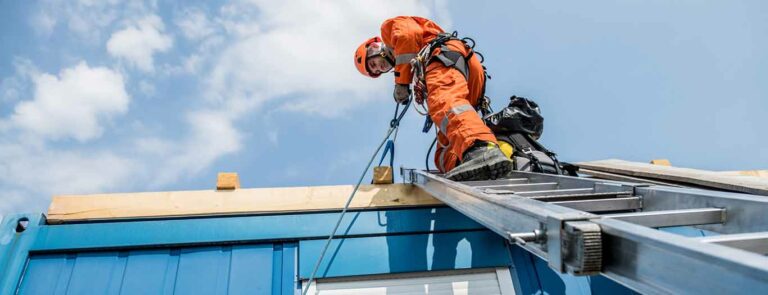All About Roar Solutions
All About Roar Solutions
Blog Article
Not known Details About Roar Solutions
In order to protect installments from a prospective explosion an approach of analysing and categorizing a possibly harmful area is called for. The objective of this is to ensure the proper selection and setup of devices to ultimately stop a surge and to guarantee security of life.

(https://sandbox.zenodo.org/records/174151)
No tools should be mounted where the surface area temperature level of the tools is above the ignition temperature of the offered danger. Below are some typical dust dangerous and their minimal ignition temperature. Coal Dust 380C 225C Polythene 420C (thaws) Methyl Cellulose 420C 320C Starch 460C 435C Flour 490C 340C Sugar 490C 460C Grain Dust 510C 300C Phenolic Resin 530C > 450C Aluminium 590C > 450C PVC 700C > 450C Soot 810C 570C The possibility of the threat being present in a concentration high adequate to trigger an ignition will certainly vary from place to place.
Hazardous location electric tools maybe made for usage in greater ambient temperature levels. Area Repair Work By Authorised Employee: Challenging screening may not be required nonetheless specific procedures may need to be followed in order for the tools to keep its third event ranking. Each item of tools with a dangerous ranking must be assessed independently.
The Best Guide To Roar Solutions
The equipment register is a detailed data source of equipment records that includes a minimum set of fields to recognize each thing's location, technological specifications, Ex-spouse category, age, and ecological data. This details is important for monitoring and managing the tools successfully within dangerous areas. In comparison, for regular or RBI tasting examinations, the grade will certainly be a mix of Thorough and Close evaluations. The ratio of Detailed to Close assessments will certainly be figured out by the Equipment Risk, which is examined based on ignition threat (the chance of a resource of ignition versus the chance of a flammable atmosphere )and the dangerous location category
( Area 0, 1, or 2). This variation will additionally influence the resourcing needs for job preparation. As soon as Whole lots are defined, you can create sampling strategies based on the sample size of each Great deal, which describes the number of arbitrary equipment items to be checked. To identify the needed sample size, two facets require to be reviewed: the dimension of the Great deal and the group of evaluation, which suggests the level of initiative that must be used( minimized, typical, or increased )to the examination of the Great deal. By combining the category of evaluation with the Lot dimension, you can after that establish the suitable denial standards for a sample, suggesting the allowed number of defective items located within that sample. For more details on this process, please describe the Power Institute Guidelines. The IEC 60079 standard suggests that the maximum interval in between examinations should not surpass 3 years. EEHA inspections will additionally be conducted outside of RBI campaigns as component of set up maintenance and devices overhauls or repair work. These inspections can be attributed towards the RBI example sizes within the influenced Great deals. EEHA evaluations are performed to determine faults in electrical tools. A heavy scoring system is vital, as a solitary tool may have multiple faults, each with differing levels of ignition threat. If the mixed rating of both evaluations is less than two times the fault score, the Lot is deemed appropriate. If the Great deal is still considered undesirable, it must undertake a full assessment or reason, which might cause more stringent evaluation protocols. Accepted Whole lot: The root causes of any type of mistakes are identified. If a common failure setting is found, additional tools may need examination and repair work. Mistakes are classified by extent( Safety, Honesty, Home cleaning ), guaranteeing that immediate issues are analyzed and resolved promptly to mitigate any type of influence on security or procedures. The EEHA database ought to track and videotape the lifecycle of faults along with the corrective actions taken. Carrying out a robust Risk-Based Evaluation( RBI )method is crucial for making sure compliance and security in managing Electrical Tools in Hazardous Locations( EEHA) (eeha). Automated Fault Rating and Lifecycle Management: Effortlessly handle mistakes and track their lifecycle to enhance evaluation precision. The introduction of this assistance for risk-based inspection even more strengthens Inspectivity's setting as a best-in-class solution for regulative conformity, along with for any type of asset-centric assessment use instance. If you are interested in finding out much more, we invite you to request a presentation and discover how our option can transform your EEHA administration processes.
Top Guidelines Of Roar Solutions

In terms of explosive threat, an unsafe area is an atmosphere in which an explosive environment exists (or may be anticipated to be present) in quantities that call for special precautions for the construction, installation and usage of equipment. Roar Training Solutions. In this write-up we check out the obstacles dealt with in the work environment, the risk control actions, and the required expertises to function securely
These compounds can, in certain conditions, form explosive atmospheres and these can have significant and heartbreaking consequences. Most of us are acquainted with the fire triangular eliminate any type of one of the 3 components and the fire can not happen, yet what does this mean in the context of unsafe locations?
In many circumstances, we can do little regarding the degrees of oxygen airborne, however we can have considerable influence on resources of ignition, for instance electric tools. Unsafe areas are documented on the dangerous area classification drawing and are identified on-site by the triangular "EX" indicator. Here, among other key information, zones are split right into 3 types depending upon the hazard, the possibility and duration that an eruptive environment will exist; Zone 0 or 20 is deemed one of the most harmful and Zone 2 or 22 is deemed the least.
Report this page